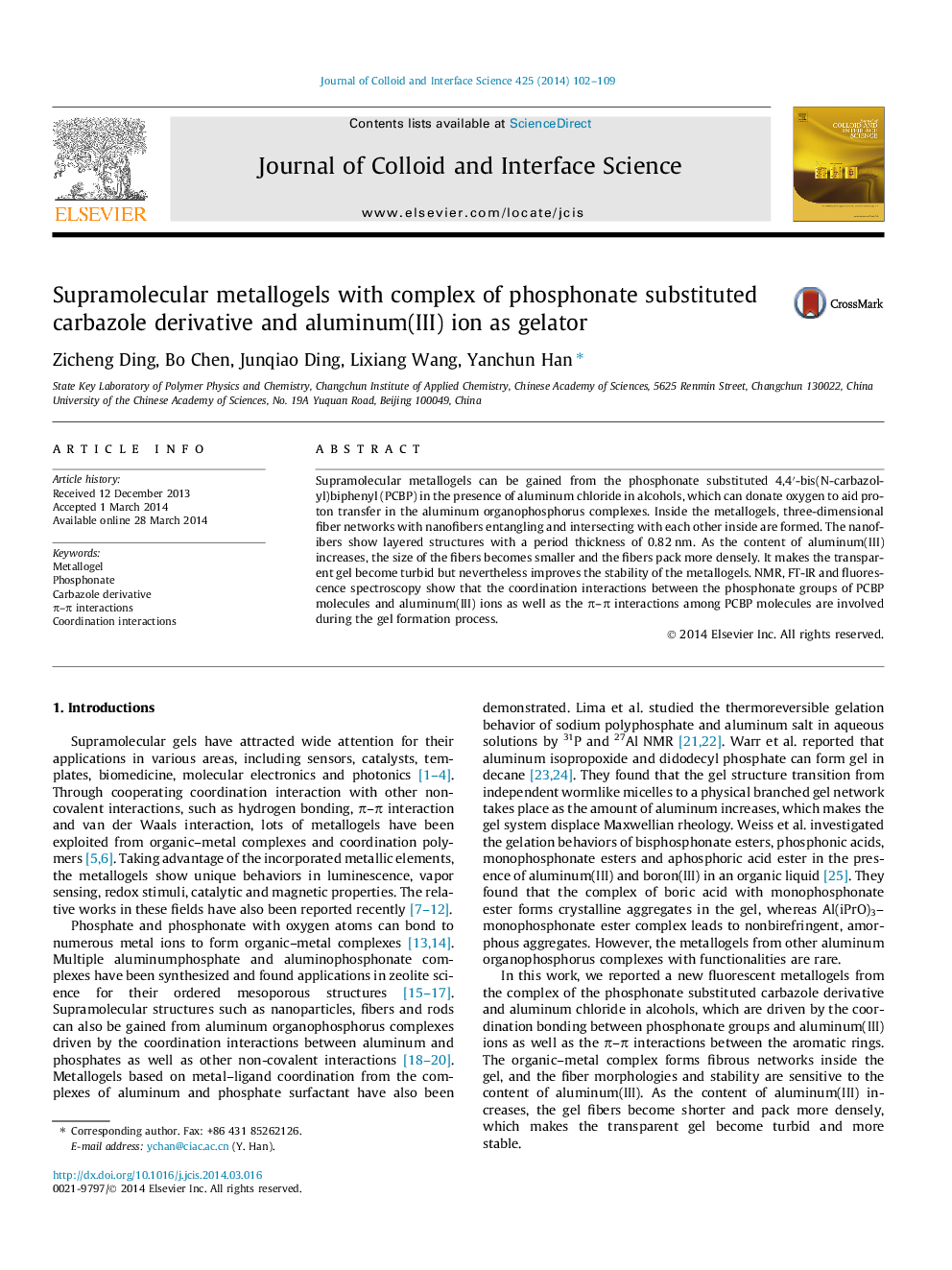| Article ID | Journal | Published Year | Pages | File Type |
|---|---|---|---|---|
| 607138 | Journal of Colloid and Interface Science | 2014 | 8 Pages |
•We report a new metallogel from the phosphonate derivative and aluminum chloride.•The organic–metal complex forms nanofibers inside the gel.•The fibers become shorter and more densely as the ratio of aluminum(III) increases.•The driving force for gelation was studied by NMR, FT-IR, UV–Vis and PL spectra.
Supramolecular metallogels can be gained from the phosphonate substituted 4,4′-bis(N-carbazolyl)biphenyl (PCBP) in the presence of aluminum chloride in alcohols, which can donate oxygen to aid proton transfer in the aluminum organophosphorus complexes. Inside the metallogels, three-dimensional fiber networks with nanofibers entangling and intersecting with each other inside are formed. The nanofibers show layered structures with a period thickness of 0.82 nm. As the content of aluminum(III) increases, the size of the fibers becomes smaller and the fibers pack more densely. It makes the transparent gel become turbid but nevertheless improves the stability of the metallogels. NMR, FT-IR and fluorescence spectroscopy show that the coordination interactions between the phosphonate groups of PCBP molecules and aluminum(III) ions as well as the π–π interactions among PCBP molecules are involved during the gel formation process.
Graphical abstractFigure optionsDownload full-size imageDownload high-quality image (50 K)Download as PowerPoint slide
